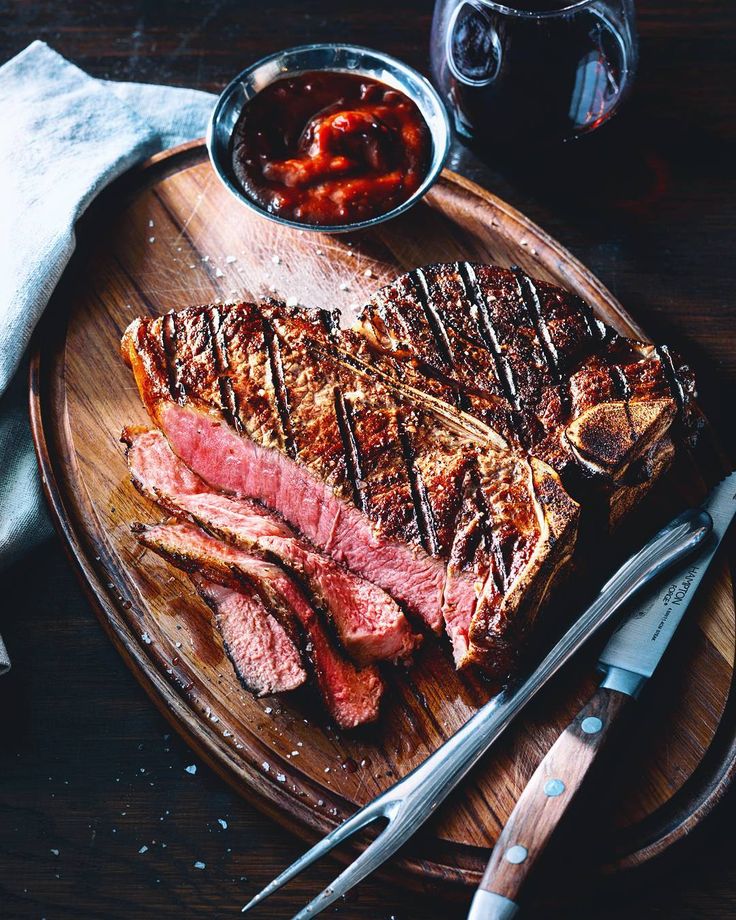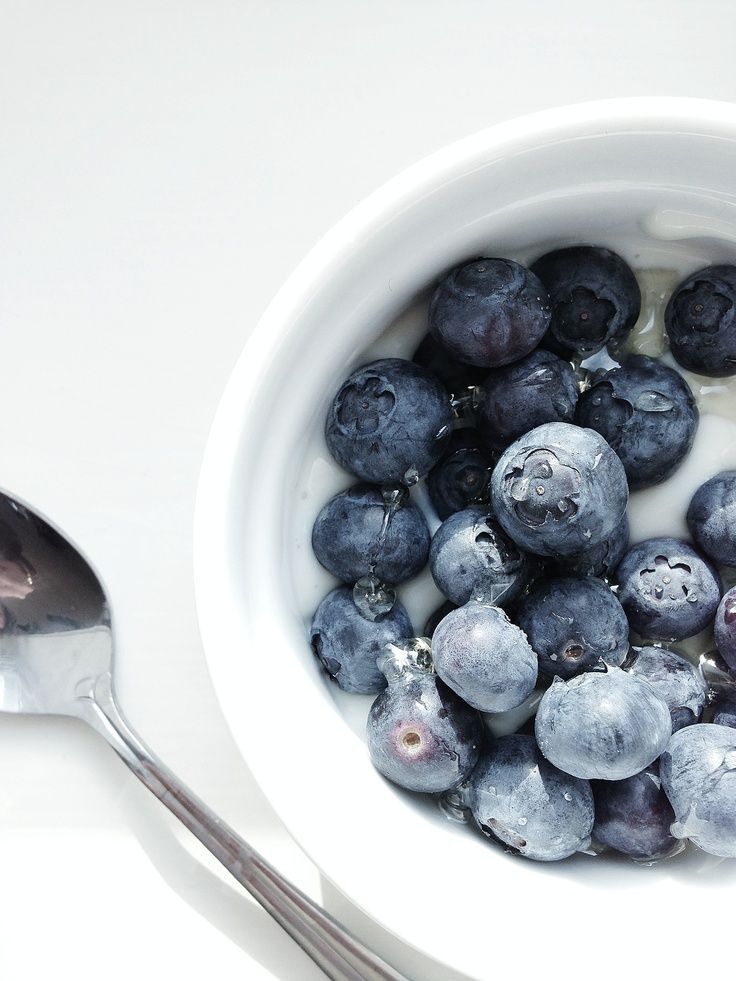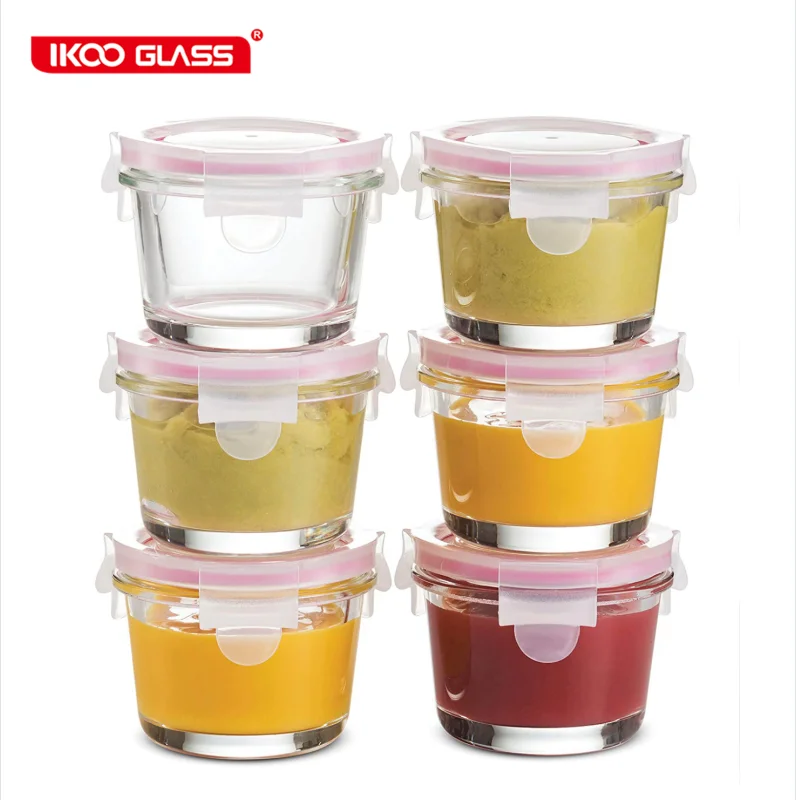Newborn baby feeding position
Breastfeeding Positions | Feeding Your Baby
Breastfeeding takes practice. It takes time to work out which positions feel best – try them all out to see which feels best.
- Latching on
- Breastfeeding positions
- Burping your baby
Breastfeeding positions
Before you breastfeed your baby, have a drink beside you – something thirst quenching like a big glass of water. There are a few different breastfeeding positions you can try, these are 3 of the most popular:
Cradle hold
This is the probably the most popular breastfeeding position. However, if you've had a caesarean, this may be uncomfortable as your baby lies across your tummy near the scar (try lying on your side or the rugby hold instead). For the cradle hold, sit in a comfy chair with arm rests, or a bed with cushions or pillows around you.
-
Lie your baby across your lap, facing you.
-
Place your baby's head on your forearm – nose towards your nipple.
Your hand should support the length of their body.
-
Place your baby's lower arm under yours.
-
Check to make sure your baby's ear, shoulder and hip are in a straight line.
Here is a top tip…
If you're sitting on a chair, rest your feet on a stool or small table – this will stop you from leaning forward which can make your back ache.
Lying on your side
This is a good position if you've had a caesarean or difficult delivery, or if you're breastfeeding in the middle of the night.
-
Start by getting comfy lying on your side. Your baby lies facing you, so you are tummy to tummy. Check to make sure your baby's ear, shoulder and hip are in a straight line – not twisted.
-
Put some cushions or pillows behind you for support. A rolled up baby blanket placed behind your baby will help support them - remember to remove it after you have finished feeding.
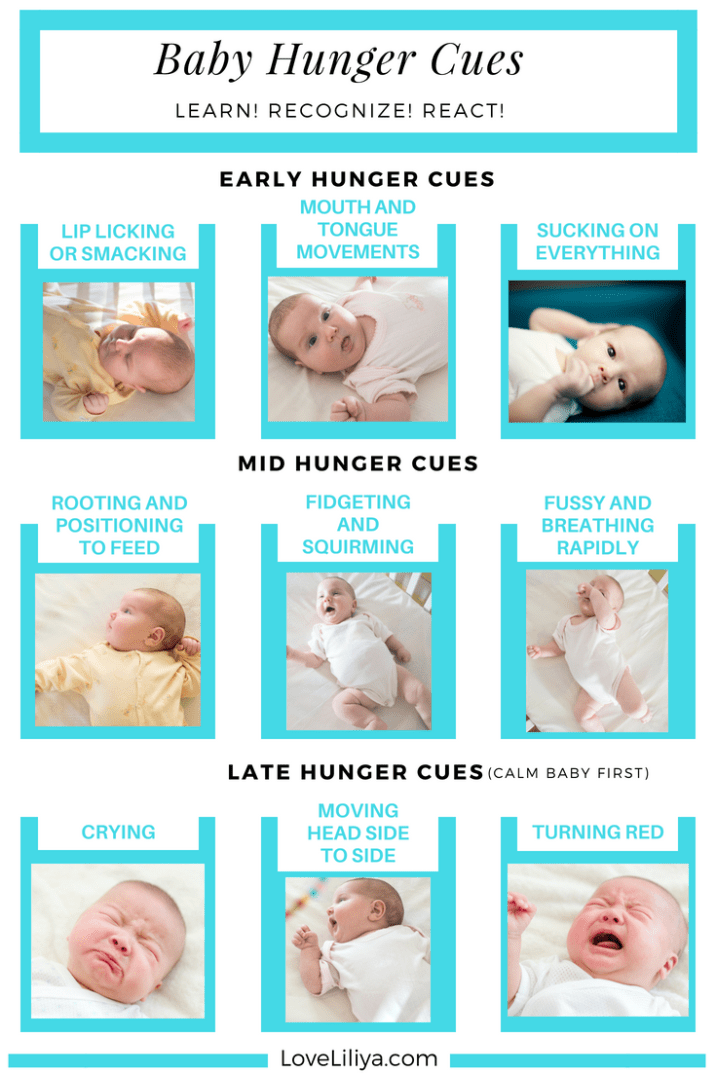 If you've got a pillow under your head, make sure it's not too close to your baby's head or face.
If you've got a pillow under your head, make sure it's not too close to your baby's head or face. -
Tuck the arm you're lying on under your head or pillow (ensuring your baby's position isn't altered by the pillow) and use your free arm to support and guide your baby's head to your breast.
Laid-back nursing
Laid-back breastfeeding, also known as "biological nursing", is when you lie back in a comfortable semi-reclined position on a comfy sofa or bed. If you have had a caesarean section (c-section), your baby can lie across you and away from your incision.
-
Lean back (but not flat) on a sofa or bed.
-
Prop yourself up with cushions or pillows so your back, shoulders and neck feel supported.
-
When you are comfortable, place your baby on your front. Their tummy should be resting on your tummy – but if this is uncomfortable, lie them to one side.
-
Make sure you are upright enough to look into your baby's eyes
-
While supporting your baby, gently guide your baby to your nipple.
 For more information, have a look at this video on laid back nursing..
For more information, have a look at this video on laid back nursing..
Rugby hold (or the ‘clutch’)
The rugby hold is a good position for twins as you can feed them at the same time, as well as caesarean babies as there's no pressure on the tummy and scar area.
-
Sit in a chair with a cushion or pillow along your side.
-
Position your baby at your side (the side you want to feed from), under your arm, with their hips close to your hips.
-
Your baby's nose should be level with your nipple.
-
Support your baby's neck with the palm of your hand.
-
Gently guide them to your nipple.
Further help
Have a look at this video on breastfeeding positions for more help and guidance.
Breastfeeding Friend from Start for life
The Breastfeeding Friend, a digital tool from Start for Life, has lots of useful information and expert advice to share with you – and because it's a digital tool, you can access it 24 / 7.
11 Different Breastfeeding Positions | Medela
You may need to try a few breastfeeding positions before finding a favourite that works best for you and your baby. Check out our picture gallery for inspiration
Share this content
There’s no right or wrong way to hold and feed your baby, and each mum and baby will find their own preferred position to feed in. What’s important is that you both feel comfortable.1,2 Knowing a few different breastfeeding positions and techniques can be helpful because life often requires us to be versatile, especially as your baby gets bigger and you start to go out and about more.
Discover 11 different breastfeeding positions and find out what is best for you and your baby:
- Laid-back breastfeeding or reclined position
- Cradle hold
- Cross-cradle hold
- Rugby ball hold
- Side-lying position
- Laid-back breastfeeding after a c-section
- Upright breastfeeding or koala hold
- Dangle feeding
- Nursing in a sling
- Double rugby ball hold
- Dancer hand nursing position
Whichever breastfeeding position you choose, remember:
- Gather everything you need, such as a drink, snacks, your mobile, TV remote, book or magazine, before you start feeding.
 And don’t forget to have a wee first – you may not be able to get up again for some time!
And don’t forget to have a wee first – you may not be able to get up again for some time! - Make sure your baby is comfy. Whatever position you’re in, your baby should be stable and supported, while his head, neck and spine should not be twisted.
- Ensure you feel relaxed and comfy too. Use cushions, pillows or rolled towels to support your back or arms if you need to.
- Check your baby is latching on correctly. A good latch is vital for comfortable breastfeeding.
- If your baby struggles to latch or breastfeeding makes you sore, seek support from a lactation consultant or breastfeeding specialist. They will also be able to show you how to support your baby to help you feed more comfortably.
1: Laid-back breastfeeding or reclined position
The laid-back breastfeeding position, also known as biological nurturing,1 is often the first mums try. If your baby is placed on your chest or tummy as soon as he’s born, all being well he’ll instinctively work his way towards one of your breasts and attempt to latch on – this is known as the ‘breast crawl’. Skin-to-skin contact helps stimulate his feeding instincts, while gravity helps him to latch on well and keeps him in place.
Skin-to-skin contact helps stimulate his feeding instincts, while gravity helps him to latch on well and keeps him in place.
However, laid-back breastfeeding isn’t just for newborns – it can work well with babies of any age. It may be especially useful if your baby struggles to latch in other holds, he doesn’t like his head being touched as he feeds, if you have a forceful let down, or if your breasts are large, as mum-of-one Isabel, UK, discovered: “The combination of my big boobs and a small 2.7 kg (6 lb) baby made positioning tricky at first. It took me a few weeks to realise there was no position I ‘should’ be in. In the end I mainly breastfed lying down with my baby balanced on top of me.”
You’ll probably be comfier if you’re reclining gently rather than lying flat on your back. Use cushions or pillows so you’re supported and can see your baby.
2: Cradle hold
This is the classic position most of us picture when we think of breastfeeding. It involves you sitting upright, with your baby positioned on his side, his head and neck laying along your forearm and his body against your stomach, in a tummy-to-mummy position.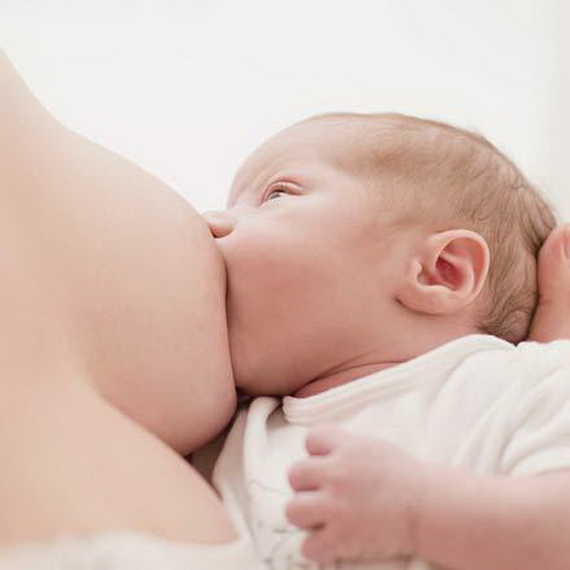 3 Although it’s a very popular position, it’s not always easy with a newborn because it doesn’t give your baby as much support as some other holds. A pillow or cushion behind you and a breastfeeding pillow across your lap propping up your baby or your arms may give you more support, and avoid strain on your back or shoulders. If you use a breastfeeding pillow, make sure it doesn’t lift your baby too high – your breasts should remain at their natural resting height to avoid sore nipples and a strained latch.
3 Although it’s a very popular position, it’s not always easy with a newborn because it doesn’t give your baby as much support as some other holds. A pillow or cushion behind you and a breastfeeding pillow across your lap propping up your baby or your arms may give you more support, and avoid strain on your back or shoulders. If you use a breastfeeding pillow, make sure it doesn’t lift your baby too high – your breasts should remain at their natural resting height to avoid sore nipples and a strained latch.
“I used the cradle hold because it worked! It felt comfortable and I liked sitting there just looking at my baby,” says Rachael, mum of two, Italy.
3: Cross-cradle hold
This looks similar to the cradle hold but your arms switch roles so your baby’s body lies along your opposite forearm.3 The aim is to support your baby around his neck and shoulders to allow him to tilt his head prior to latch. This is a great newborn breastfeeding position and is also good for small babies and those with latching difficulties.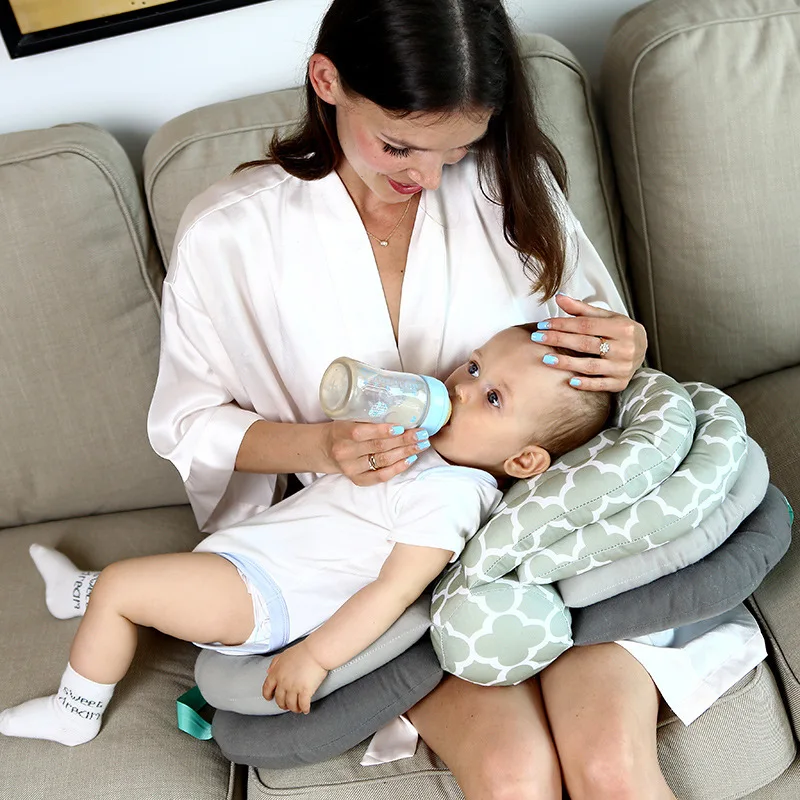 Because your baby is fully supported on your opposite arm, you have more control over his positioning, and you can use your free hand to shape your breast.
Because your baby is fully supported on your opposite arm, you have more control over his positioning, and you can use your free hand to shape your breast.
Julie, mum of two, UK, likes the flexibility of this position: “I normally do the cross-cradle with my newborn. It gives me a hand free to tend to my toddler at the same time.”
In the early days, don’t hold your baby around his head as you might push his chin on to his chest. This can result in a shallow latch (as your nipple hits the base of his tongue rather than his palate) and sore nipples for you. As your baby gets bigger this technique becomes much easier, and you can rest your baby’s head in your hand (as shown in our gallery image above).
4: Rugby ball hold
In this position (also known as the underarm or clutch), you sit with your baby resting along your forearm. His body tucks alongside your side, with his feet towards the back of the chair, or whatever you’re sitting on.3 This is another helpful early nursing position because it supports your baby well, while giving you plenty of control and a good view of his face.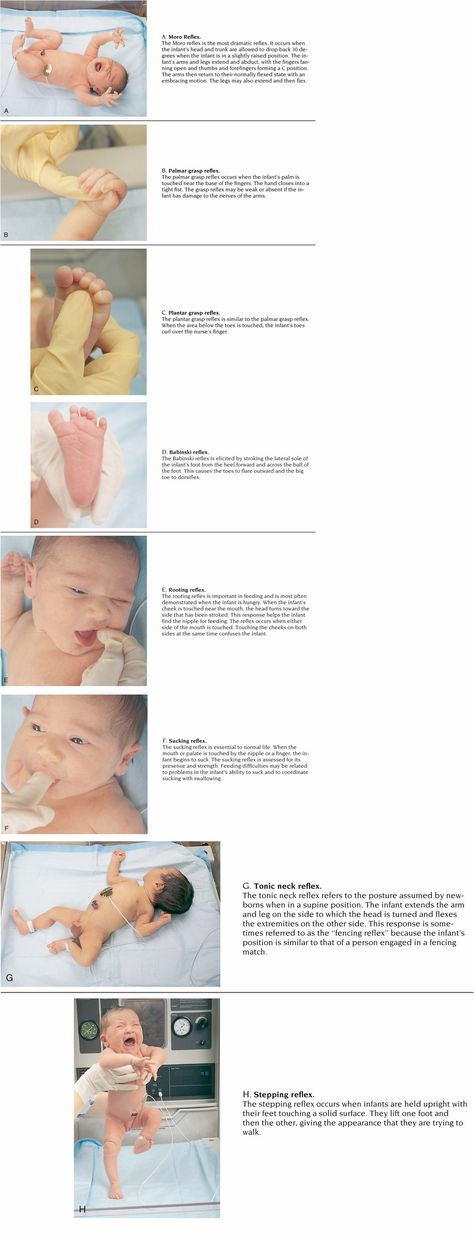 Being tucked in closely alongside your body will help your baby feel safe too. Mums who’ve had a c-section, twins, or a premature baby, along with those who have larger breasts, may also like this position.
Being tucked in closely alongside your body will help your baby feel safe too. Mums who’ve had a c-section, twins, or a premature baby, along with those who have larger breasts, may also like this position.
“With my first daughter I had very large K-size breasts that were double the size of her head,” remembers Amy, mum of two, Australia. “I placed a rolled-up towel underneath each breast to help lift them up as they were so heavy, and fed her in a rugby ball hold, but more upright so she wasn’t overwhelmed by their size. This position was also good as I had a c-section wound and couldn’t rest her across my body.”
5: Side-lying position
Ideal for relaxed night feeds and breastfeeding in bed or on the sofa, side-lying can also be more comfortable than sitting if you’ve had a caesarean or stitches.3 You and your baby need to lie on your sides next to one another, belly-to-belly.
“I struggled to sit up in bed during countless night feeds, partly due to having had a c-section, partly due to exhaustion,” says Francesca, mum of one, UK.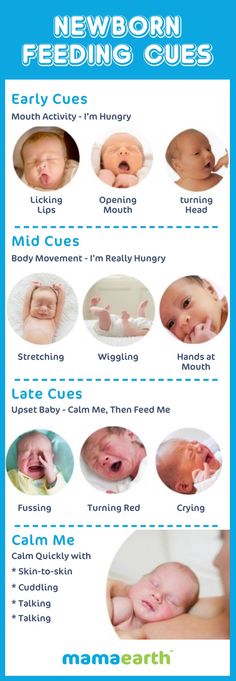 “Then I discovered I could feed my baby lying on my side and relax at the same time.”
“Then I discovered I could feed my baby lying on my side and relax at the same time.”
“Maisie couldn’t attach any other way than the side-lying position due to her tongue-tie. A lactation consultant showed me how to do it. It seemed like she could handle the strength of my flow and hold on better in this position. When her mouth grew bigger she became much better at attaching in the regular way,” says Sarah, mum of two, Australia.
6: Laid-back breastfeeding after a c-section
If you’ve had a caesarean delivery and can’t find a comfortable breastfeeding position,3 this may help. Reclining with your baby’s body across your shoulder will let you nurse comfortably without any weight or pressure on your wound, or you could also try side-lying.
7: Upright breastfeeding or koala hold
In the upright or koala hold, your baby sits straddling your thigh, or on your hip, with his spine and head upright as he feeds.4 You can do this hold with a newborn if you give your baby plenty of support, and it’s also a convenient way to feed an older baby who can sit unaided.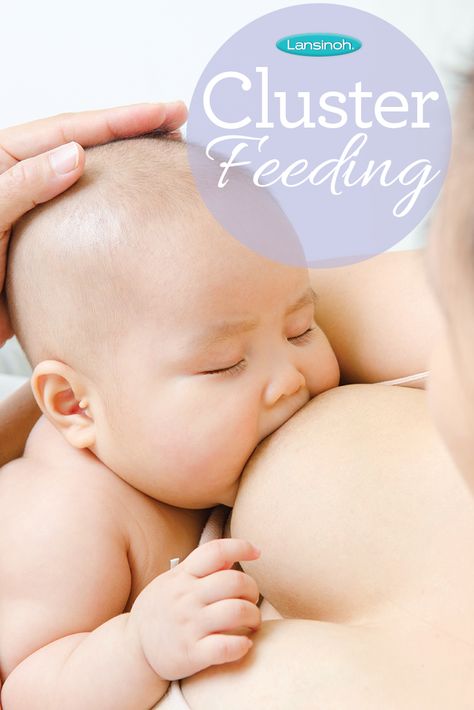 The upright or koala hold is often the most comfortable breastfeeding position for babies who suffer from reflux or ear infections (who often prefer to be upright), and it can also work well with babies who have a tongue-tie or low muscle tone.
The upright or koala hold is often the most comfortable breastfeeding position for babies who suffer from reflux or ear infections (who often prefer to be upright), and it can also work well with babies who have a tongue-tie or low muscle tone.
“When my baby was older I often used the upright hold because it was comfortable for both of us and I could still feel her body close to mine,” says Peggy, mum of one, Switzerland. “It was also discreet when we were feeding in public.”
8: Dangle feeding
This breastfeeding position involves your baby lying on his back, while you crouch over him on all fours and dangle your nipple in his mouth.4 Some mums say doing this for short periods helps if they have conditions like mastitis and don’t want their breasts to be squashed or touched; others claim that gravity helps unplug blocked milk ducts, although there’s no scientific evidence to support this yet. You can also dangle feed while you’re sitting, kneeling up over your baby on a bed or sofa, or almost lying down but propped up on your arms.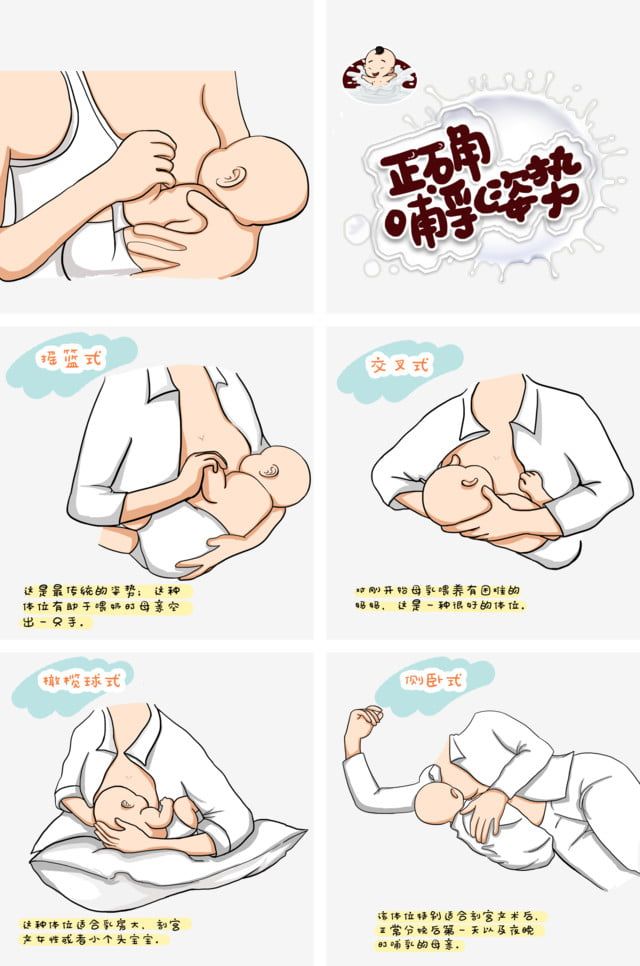 You may need to use cushions and pillows to support yourself so you don’t strain your back or shoulders.
You may need to use cushions and pillows to support yourself so you don’t strain your back or shoulders.
“I used the dangle feeding position a few times when I had blocked ducts and other methods of easing out the lumps in my breasts hadn’t worked. It seemed to help – I think because gravity was in my favour, and because the angle and position of my baby were so different to our normal breastfeeds that she drained my breast differently,” says Ellie, mum of two, UK.
Dangle feeding is probably not a breastfeeding position you want to do regularly, but it might just help if you need to mix it up.
“I used a dangle feeding position when my baby was struggling to latch,” says Lorna, mum of two, UK. “It wasn’t the most comfortable way to breastfeed, but at the time I’d do absolutely anything to get him to latch. It worked – and we’re still breastfeeding eight months on!”
9: Nursing in a sling
It may take a little practice, but breastfeeding your baby in a sling can be convenient when you’re out and about, looking after older children, or even doing light chores.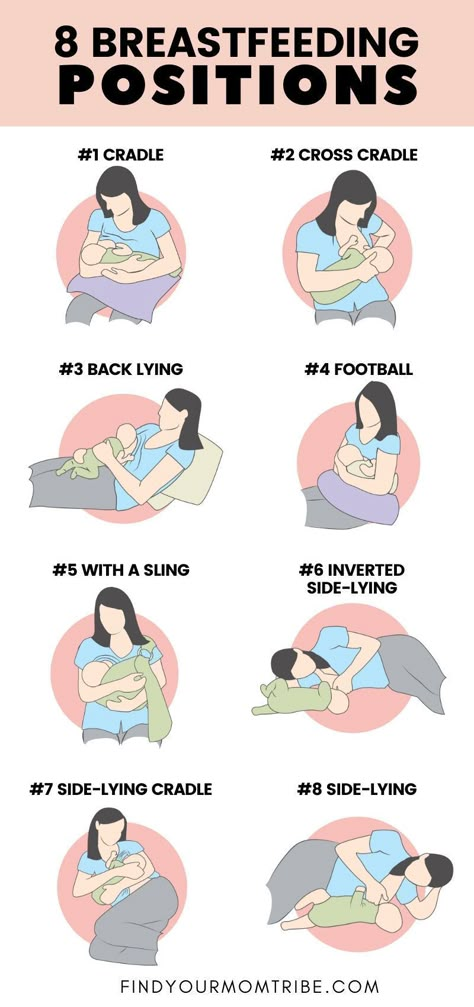
It’s also handy if your baby dislikes being put down or feeds frequently, as Lindsay, mum of two, US, found: “I used a front carrier often with both my babies. When we were out I tied a sarong around my neck and draped it over the carrier so it worked as a cover. They would nurse like this until they fell asleep.”
This method usually works best if your baby is an experienced breastfeeder and can hold his head up by himself. You can breastfeed in all sorts of slings, including stretchy wraps, ring slings and front carriers. Whichever you choose, make sure you can always see your baby’s face and his chin is not pressed against his chest.
10: Double rugby ball hold
The double rugby ball hold (also known as the double clutch) is a great breastfeeding position for twins, as you can feed them in tandem while having your hands relatively free.4 You’ll probably need to use a specially designed twin breastfeeding pillow while feeding like this, especially in the early days.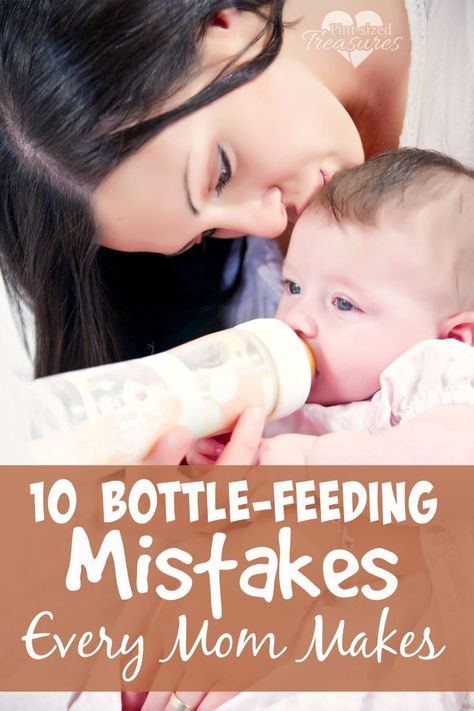 This gives extra support to get both babies into position, and also minimises pressure on your belly if you’ve had a c-section. You may also find that with your hands freer, you can tend to one baby without disrupting the other’s feed.
This gives extra support to get both babies into position, and also minimises pressure on your belly if you’ve had a c-section. You may also find that with your hands freer, you can tend to one baby without disrupting the other’s feed.
“When my twins were born they were tiny and needed feeding every two hours, day and night. I soon realised for me to achieve anything other than feeding, I needed to tandem feed,” says Emma, mum of two, UK. “I used the double rugby ball hold with a breastfeeding cushion.”
Other breastfeeding positions you could try with twins include two cradles crossed across one another, one twin in a rugby ball hold and one in a cradle hold, and double laid-back or double upright breastfeeding positions.
11: Dancer hand nursing position
If your baby struggles to stay latched on or has low muscle tone – perhaps because he was born prematurely, has a condition such as Down’s syndrome, or has an illness or disability – try this hold to support both his head and your breast. 4 Start by cupping your breast with your hand underneath, fingers on one side and thumb on the other. Then edge your hand forwards so your thumb and index finger form a ‘U’ shape just in front of the breast. Your three remaining fingers should continue to support the breast underneath. Rest your baby’s jaw on your thumb and index finger as he feeds, with his chin at the bottom of the ‘U’, your thumb gently holding one of his cheeks and your index finger the other. This hold gives your baby plenty of support and you control over his position, as well as a great view of his latch.
4 Start by cupping your breast with your hand underneath, fingers on one side and thumb on the other. Then edge your hand forwards so your thumb and index finger form a ‘U’ shape just in front of the breast. Your three remaining fingers should continue to support the breast underneath. Rest your baby’s jaw on your thumb and index finger as he feeds, with his chin at the bottom of the ‘U’, your thumb gently holding one of his cheeks and your index finger the other. This hold gives your baby plenty of support and you control over his position, as well as a great view of his latch.
References
1 Colson SD et al. Optimal positions for the release of primitive neonatal reflexes stimulating breastfeeding. Early Hum Dev. 2008;84(7):441-449.
2 UNICEF UK BFHI [Internet]. Off to the best start; 2015 [cited 2018 Feb].
3 Cadwell K. Latching‐On and Suckling of the Healthy Term Neonate: Breastfeeding Assessment. J Midwifery & Women’s Health. 2007;52(6):638-642.
4 Wambach K, Riordan J, editors.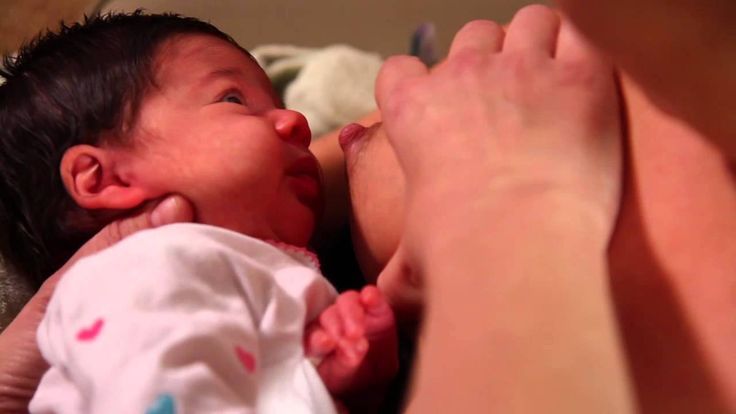 Breastfeeding and human lactation. Jones & Bartlett Learning; 2014. 966 p.
Breastfeeding and human lactation. Jones & Bartlett Learning; 2014. 966 p.
Positions for breastfeeding | Philips
Search Support IconSearch Keywords
Home ›› Newborn Feeding Positions and Good Latching
↑ Top
Although breastfeeding can be a natural element of motherhood practice, patience and a little advance preparation. So, if you decide to breastfeed your baby, be prepared for the fact that you may encounter the often encountered problem of proper breastfeeding. However, do not be upset.
Breast latch is one of the most important things about breastfeeding and can be difficult for new moms, and understandably so; It is essential that the baby properly latch on to the nipple during breastfeeding so that he can get enough breast milk. Proper breast latch is also important because it allows the mother to avoid problems such as blockage of the milk ducts and sore nipples.
Learn more about how to properly care for your breasts in the Quick Guide to Breast Care.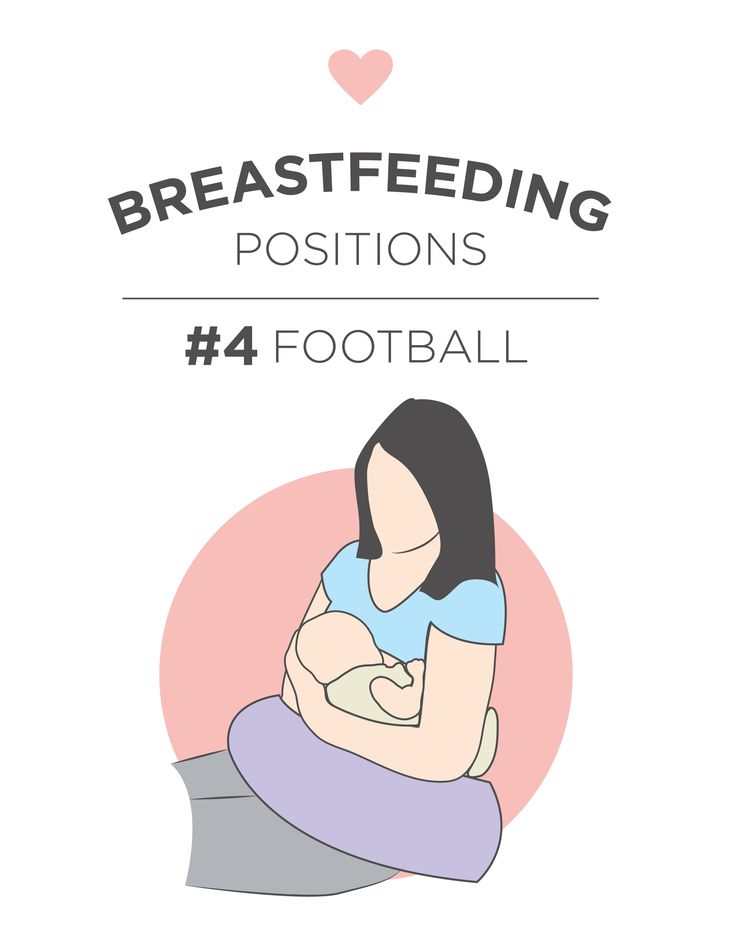
One of the best ways to teach your baby to latch on properly is to find a breastfeeding position that is comfortable for both you and your baby. Here we will discuss different breastfeeding positions as well as other useful tips to help you achieve a proper breastfeeding. If you have any questions or concerns, please contact your doctor or lactation specialist for further support.
Helping your baby latch on properly
Before looking at the different positions for breastfeeding, there are a few things you can do to help your baby: [1]
- Create a calm and relaxing environment. Your comfort is key when breastfeeding, so find a position that is comfortable for you to breastfeed. In a chair, or on a bed, or listening to relaxing music, make sure you are calm and relaxed before feeding.
- Skin to skin contact. Breastfeeding is a great opportunity to bond with your baby.
 Awaken your newborn's natural instincts by holding him, dressed only in a diaper, against your bare chest.
Awaken your newborn's natural instincts by holding him, dressed only in a diaper, against your bare chest. - Let your child take the lead. Gradually you will learn to understand the individual signs of hunger in your child. Usually, children begin to shake and nod their heads in the direction of the mother, toss and turn, lick their lips, stick out their tongue, showing that they are hungry.
- Try not to force things. Help the baby find the breast, but try not to push the nipple into the baby's mouth.
Sensitive nipple protection. If your nipples are sore or cracked, try using soft, ultra-thin nipple guards to relieve sore nipples during feeding and prevent further nipple trauma. Due to the fact that the pads are made of thin silicone, the baby will still feel the warmth and smell of the mother's breast.
Popular breastfeeding positions to help ensure proper breastfeeding
In addition to these beneficial nursing steps, it is important to adopt a position that is comfortable for both you and your baby.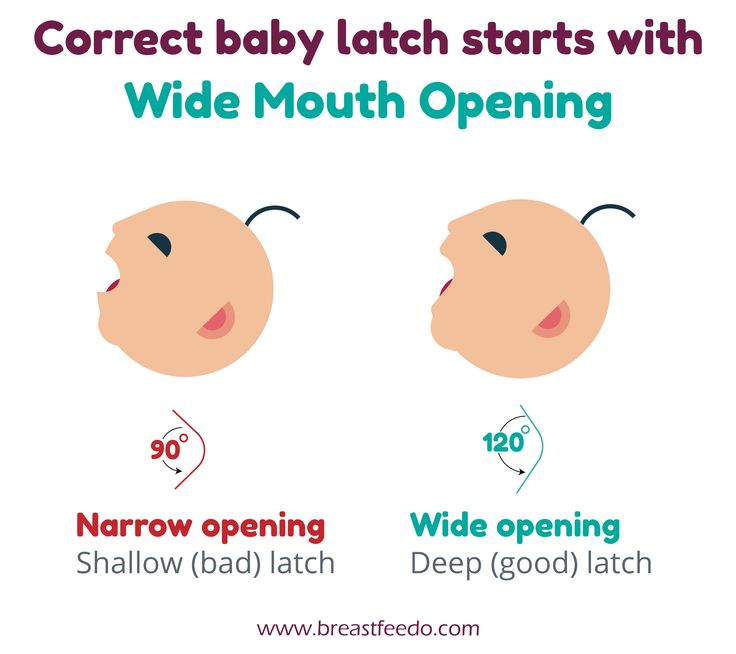 Experiment with different positions until you find the one that makes you feel comfortable and helps your baby latch on properly.
Experiment with different positions until you find the one that makes you feel comfortable and helps your baby latch on properly.
Here are some of the most common positions that will help you and your baby get a good latch on during feeding: [1]
breastfeeding positions
1. Feeding in a reclining position.
The reclining or leaning back position is ideal for mothers who are breastfeeding for the first time. To try it, simply lean back into a reclining position with pillows under your neck, shoulders, and arms. Once you have established belly-to-belly contact with your baby, let him find the breast while supporting him as much as possible.
2. Feeding in the side lying position.
If you are looking for a feeding position that allows you to feed your baby and rest at the same time, the side lying position may be perfect for you. Lie on your side, leaning on a special roller or pillow. Facing you, the baby will be able to take the breast, which lies on the pillow. You can put a towel or blanket behind your baby to keep him in place while you feed. Also, this position is well suited for mothers who cannot sit after a caesarean section.
Facing you, the baby will be able to take the breast, which lies on the pillow. You can put a towel or blanket behind your baby to keep him in place while you feed. Also, this position is well suited for mothers who cannot sit after a caesarean section.
3. Feeding in the cross cradle position.
Another great position for getting your baby to latch on properly while breastfeeding is the “cross cradle,” which involves placing a pillow on your lap and placing your baby on the side facing you. During feeding, support the baby's back and head with the arm opposite the breast you are feeding.
4. Feeding in the "soccer ball" or "under the arm" position.
To assume this pose, you need to sit comfortably on a chair (in an armchair), leaning on pillows. Place the child on a pillow on the back so that his legs are under your arm and pointing towards the back of the chair. Supporting the back and shoulders of the baby, hold his head with the same hand, and with the other hand you can support the breast that you feed.
As you experiment with feeding positions, you may notice that your baby may like certain positions more. Once you have found the right position for feeding, look out for the following signs that your baby is latching on well: [2] [3]
- You do not feel acute pain.
- The baby's mouth is wide open, the baby's lower lip is turned out and the upper lip is in the normal position.
- The lower part of the areola (the areola) is in the baby's mouth.
- Baby's chin touches your breast.
Useful tip if you have flat or inverted nipples
If you have inverted or flat nipples, you need to help your baby achieve a good latch - grab the nipple along with most of the areola. Here are some helpful tips for breastfeeding mothers with flat or inverted nipples:
- Help yourself with your fingers: you can try to stretch the nipples by rolling them between your fingers in the center where the hole is located, so they create a slight pressure, and the nipple is pushed out.
- If these suggestions do not help, then use a nipple shield when breastfeeding for the first time so that the baby can latch onto the nipple and pull it out over time.
It's the journey that counts, not the destination
You are now armed with the knowledge you need to know about the basic nursing positions, as well as tips to help you get a good latch on while breastfeeding.
Remember that breastfeeding gets better with time and practice, so don't be discouraged if you run into obstacles or difficulties along the way, such as a bad latch.
Enjoy this special time with your baby and don't forget to consult your doctor or lactation specialist with any questions or concerns you may have.
Baby+ app
Download the app and track your child's development and growth with trackers, and keep those special moments forever.
Download app:
Pregnancy+ 9 App0003
You are leaving the Philips Healthcare (“Philips”) official website. Any links to third party websites that may be included on this site are provided solely as a convenience to you. Philips makes no warranties regarding any third party websites or the information they contain.
I understand
You are about to visit a Philips global content page
Continue
You are about to visit the Philips USA website.
I understand
comfortable and correct positions for breastfeeding and bottle feeding lying, sitting, on the side
Proper attachment of the baby to the breast helps to establish lactation, and the correct and comfortable position for feeding the baby from the bottle has a positive effect on the digestion of the newborn . Over time, each mother finds her favorite position in which it is convenient for both her and the child. But sometimes new parents have to be flexible and learn several options for feeding the baby at once, including in different situations.
Whatever position a woman chooses, it is important to understand that this is not only her position, but also the position of the child relative to the mother. Therefore, it is necessary to ensure the following conditions:
- a comfortable position for the mother (lying / sitting, does not matter): there must be support, comfort, a straightened chest;
- support for the body and head of the child: in any position, lying or sitting, the child always leans on the body and hands of the mother;
- with breastfeeding, the chest, abdomen, hips of the child are pressed against the mother;
- at the time of attachment to the breast, the baby's nose is located at the level of the nipple;
- when applying to the breast and during sucking, the mother draws the child to her by the area between the shoulder blades; the back of the baby's head is free, the chin is pressed tightly against the chest, the baby's head is slightly thrown back, there is an angle between the forehead and chest (1).
If you follow all these rules, then breastfeeding will bring pleasure to both participants, and bottle feeding will be safe and effective.
Interesting facts about newborn feeding
Here's what's important to know about proper attachment and bottle feeding.
| Mom's location | Breastfeeding time is a vacation for mom. That is why a woman first of all needs to ensure herself comfort: lie down or sit down to be comfortable. The child can eat for a long time, so take a good position right away, you may have to linger in it. |
| Signs of proper breastfeeding | Mom does not feel acute pain, the baby takes not only the nipple into her mouth, but captures the entire areola; the baby’s mouth is wide open, the lower lip is turned outward, the chin is pressed to the chest, the cheeks are rounded; the baby does not champ or smack - only swallowing and breathing (2) |
| Signs of proper bottle feeding | Baby close to you, head up so he can expel excess air. |
| What affects the correct position for breastfeeding | The amount of milk and its production; the feeling and health of the mother's breasts - with proper attachment, there will be no nipple cracks (3); baby's comfort - if the baby is not properly attached, the baby will be nervous, restless, he will have to make an effort to get milk. Babies should calm down on the breast, not the other way around |
| What influences the correct posture for bottle feeding | The baby's digestion and comfort |
Comfortable and correct positions for breastfeeding a newborn
Now let's talk about the most popular positions for breastfeeding a newborn, as well as share expert advice. We also post pictures for reference.
Sitting
There are several common options where a mother can comfortably sit while sitting for the entire time it takes to satiate her baby.
Classic cradle
Classic cradle. Photo: Lilia KhusainovaOne of the most popular positions for feeding a baby. Mom sits down and takes the baby in her arms so that his head is in the crook of the elbow. Next, you need to turn the child towards you with your stomach and give your chest, and with your palm support the baby’s ass and back.
"Reverse cradle"
"Reverse cradle". Photo: Lilia KhusainovaAnother common position is the reverse cradle. According to Lusina Chebotareva, pediatrician, neonatologist and breastfeeding consultant , in this case, the baby is supported by the hand opposite to the breast that the mother feeds. This position is most convenient for breastfeeding newborns, as it allows the mother to easily control the position of the baby's body and guide him, while feeding the breast with his free hand.
Lying down
Some new mothers cannot sit as usual for the first time after giving birth. In this case, the positions in which the mother lies are useful for breastfeeding. But anyone can try these options.
Lying on your side
Lying on your side. Photo: Lilia KhusainovaIt is common for mothers to breastfeed lying on their side. The woman's head lies on the pillow, and her shoulder is under the pillow. In this case, she does not "hanging" over the child, leaning on her elbow.
Lying on mother's arm
Lying on mother's arm. Photo: Lilia KhusainovaThis pose is similar to the previous one, the mechanics are the same, but here the child lies on mother's hand. It can be convenient for large breasts. You can hold the baby in the crook of the elbow or feed the "upper" breast.
Biological
Biological. Photo: Lilia KhusainovaThis position is less common, but it is quite comfortable. The child lies on the mother's stomach to the stomach, the head is located above the legs, while the mother is relaxed half-sitting in the pillows.
"Football position"
"Football position". Photo: Lilia Khusainova The position from under the arm (from under the arm) is called the "football position" in English-language literature. The child is applied to the chest, while his head looks out from under his mother's hand, and the torso is slightly behind. This position helps with flat, inverted nipples and lactostasis.
Standing
Not the most comfortable position for feeding, but still common. Mom stands, but holds the child with her hands in the same way as if she were sitting. The main thing is to try to find support for the back.
While walking
Breastfeeding while moving is also possible: the mother walks around the room, holding the baby as she likes, for example, in the “cradle” position. Often women use this method for laying the baby: they feed him and cradle him at the same time.
Hanging over your baby
You can feed your baby while hanging over him. For example, he lies on the changing table or in the crib, and you hang over the baby, leaning on your arm / elbow or without support.
Comfortable and correct positions for bottle feeding a newborn
The correct position of the baby when he is bottle feeding will help to avoid choking and improve digestion.
Cradle
This is the most versatile and comfortable position for both breastfeeding and bottle feeding. Formula or expressed milk in a bottle should be held firmly, but lightly and perpendicular to the infant's mouth. Be sure to monitor the behavior of the baby: he may wish to pause, give signs that he has eaten.
Kneeling
Many mothers bottle feed their babies with expressed milk or formula, holding them on their laps, turned slightly on their side. So there is no load on the arms and back.
Whatever position you choose for bottle-feeding, it is important that the baby does not cry or scream, and is calm. Otherwise, milk or formula may enter his respiratory tract, the baby may choke.
Physicians' comments on newborn feeding positions
— In any position when bottle feeding, remember to give the baby the opportunity to catch his breath and burp the swallowed air. Never leave a baby who sucks a bottle alone in a crib, lined with blankets or pillows, reminds Lusine Chebotareva, pediatrician, neonatologist, breastfeeding consultant. - When breastfeeding in any of the above positions, important points must be observed. The child should be fully deployed to the mother and lean on her with his whole body, his head thrown back, the mother does not hold or press the child by the back of the head; the baby's arms are outstretched and hugging the mother, the mouth is wide open. Mom hears and sees that the baby is swallowing, and it does not hurt her to feed.
If all these rules are followed, you will most likely succeed. Otherwise, you should contact a breastfeeding specialist. Perhaps you are missing some important little thing that needs to be taken into account in order for the puzzle to work out. It happens that one experienced look at the mother-baby pair, the right movement, is enough to slightly rearrange the mother's hand, and everything adds up.
Breastfeeding professionals can teach you how to properly feed your baby with formula, mixed breastfeeding + complementary foods, and expressed milk.
— It is extremely important to find a comfortable position for feeding a newborn while breastfeeding. It affects the amount of milk received by the child, and, consequently, produced by the breast (supply-demand principle), - explains Liliya Khusainova, consultant on breastfeeding and child care, leading lectures for expectant mothers at the Republican Clinical Perinatal Center » in the Republic of Bashkortostan . - Also important are the feelings of the mother during feeding. Proper attachment of the baby to the breast will avoid nipple cracks, vasospasm (vasoconstriction), pain that blocks the production of oxytocin. It is important to prevent the appearance of cracks, because they directly affect the health of the mammary gland, as they are the entrance gate for infections. In addition, improper attachment forces the baby to make more effort during sucking, which can make the baby nervous. And, of course, the correct posture affects the digestion of the child. When it comes to bottle feeding a baby, it should be intuitive. You do not need to feed the child further, if he does not want to, pushes the device away from himself, does not take the pacifier. Intuitive feeding helps to use the child's innate signals of hunger and satiety, allows you to provide the necessary increases for age, and at the same time not to overfeed him.
Popular Questions and Answers
Our expert Lusine Chebotareva, pediatrician, neonatologist, lactation consultant, answers some important questions of parents.
What positions are suitable for twin feeding?
Breastfeeding twins often requires additional pillows. With them, you can feed both babies from under the arm, or one from under the arm, and the other in the “cradle” position.
When caring for twins, it is important not to forget that they are two different people and each needs an individual approach. Mothers can feed babies from twins in any way: only with breasts, expressed milk, and also mixed, with the addition of the amount of mixture that each child needs, based on the dynamics of body weight gain.
How are breastfeeding positions different if the mother has lactostasis?
If the mother has lactostasis, it is important to establish a regular outflow of milk from the breast (4), so the best solution in this case is to change different positions and ways of emptying the breast. You can alternate between hand pumping, breast pumping, and latching on. You can also use a comfortable cold and light massage to relieve swelling.
In what positions should you never feed a newborn?
There are no provisions in which feeding is strictly prohibited. There are mistakes that are better not to make in any position of the child relative to the mother. And remember: the details matter, it's not just the inverted sponge grip and the corner of the mouth. All the biomechanics of movements are important - as in a pair dance.
References
- Optimal positions for the release of primitive neonatal reflexes stimulating breastfeeding.


